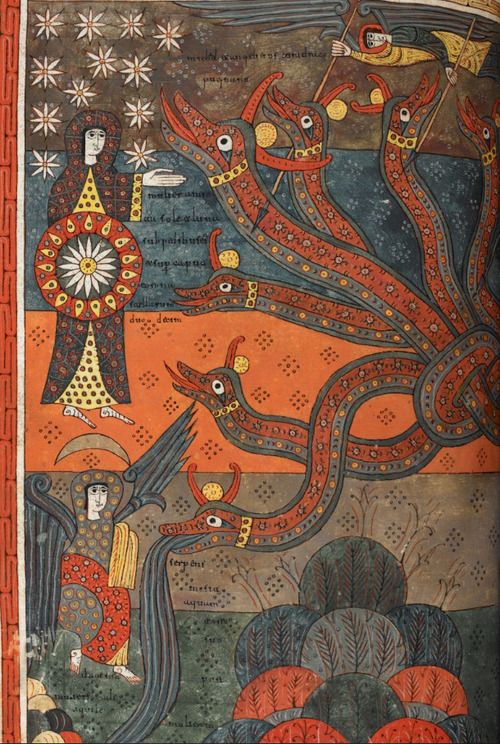
Then I saw another beast rising out of the land; it had two horns like a lamb’s but spoke like a dragon…. This calls for wisdom. Let anyone who has intelligence figure out the number of the beast for it is the number of a human being; and it’s number is six hundred and sixty-six. (Apocalypse 13:11, 18)
“This calls for wisdom.” That’s probably one of the greatest understatements ever! The debate about the identity of the Beast and the meaning of the number 666 is ongoing and seemingly endlessly fascinating.
One beast arises from the sea. Another beast arises from the land. The sea monster Leviathan and the land-monster Behemoth are a team, symbolic of a nation-state or political system-regime intent on destroying the Church. Some preachers say that the first beast is the political system that wants to destroy the Church while the second, land-based monster is the religious opposition to the Church: it is a mockery of the Lamb as it attempts a masquerade, looking like the Lamb but speaking with the voice of the dragon who attacked the woman clothed with the sun.
The land-monster causes all the people under the dominion of the first beast to “have a mark put on the right hand or on the forehead and no one was allowed to buy or sell unless one had the mark, the name of the beast or the number of its name.” (Apoc. 13:16-17) In order to participate in economic and social life, people had to be marked with the number or the name of the beast–the beast commonly identified as Nero as the numeric value of the letters in his name add up to the infamous “666.” This mark is an official stamp. Perhaps a tattoo. Certainly a travesty of the sign of the cross marked with chrism on the hands and forehead of the newly baptized.
Some modern evangelicals say “the mark of the beast” is a certain credit card or identification card. In the ancient and medieval world, membership in business guilds was an important–sometimes necessary–aspect of economic life and in the Roman world such guilds often expected members to participate in pagan religious rites. Ancient commentaries say the mark of the beast were the coins issued by the emperor with his image on them. If the early Christians could not use coins in the market, they would be effectively marginalized and exiled to rural communes where they lived “off the grid” and supplied all their own goods. But that was just as highly unlikely to be a functional way to live in the first century AD as it is in the twenty-first century AD.
How to navigate the demands of mainstream culture is a constant question in the Church, even if that mainstream culture has been formed in large measure by the Church–the most superficial study reveals that Byzantium or Holy Russia or Christian Europe were societies that often opposed the most basic Christian teachings and practices. The most overtly Christian regimes were often the most oppressive, rigid, and cruel. How to avoid receiving the mark of the beast today?


